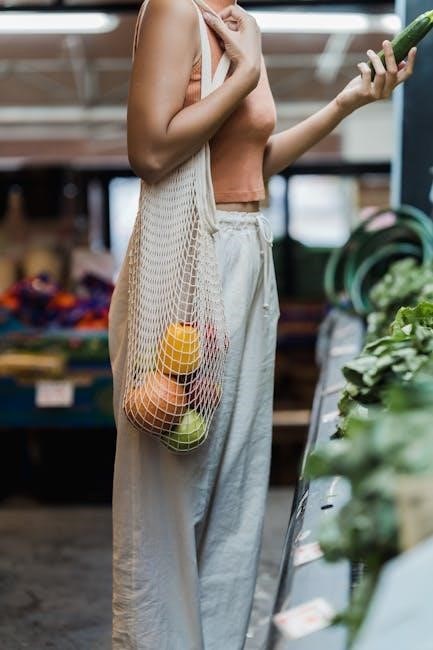Understanding Bourbon
Bourbon is a type of American whiskey made from grain, yeast, and water, originating in Bourbon County, Kentucky. It’s aged in charred oak barrels, typically for 2–20 years.
History and Origin of Bourbon
Bourbon whiskey originated in Bourbon County, Kentucky, in the 1700s, named after its birthplace. It is made from grain, yeast, and water, aged in charred oak barrels. The first bourbon was distilled by Elijah Craig, who pioneered aging whiskey in charred barrels, creating its distinctive flavor. This historical process has shaped bourbon into a beloved American spirit, with its roots deeply tied to Kentucky’s bourbon-producing legacy and tradition.
Flavor Profile and Characteristics
Bourbon’s flavor profile is rich and complex, featuring notes of vanilla, oak, caramel, and spices. The aging process in charred oak barrels contributes to its distinct taste, with sweetness and smokiness balancing each other. Additional flavors like toffee, nuts, and fruit can emerge, varying by mash bill and aging time. This diversity in flavor makes bourbon a versatile spirit, appealing to both newcomers and connoisseurs seeking unique tasting experiences.

Types of Bourbon
Bourbon comes in various styles, including Bottled-in-Bond, Cask Strength, and Small Batch. Each type offers unique flavor profiles, catering to different preferences and experiences.
Bottled-in-Bond Bourbon
Bottled-in-Bond Bourbon is a specific classification requiring the whiskey to be aged at least four years, bottled at 100 proof, and meet strict standards. It must be distilled at one distillery during a single season and aged in a bonded warehouse. This designation ensures consistency and quality, making it a sought-after choice for bourbon enthusiasts. Bottled-in-Bond Bourbons offer rich, full-bodied flavors and a distinct character, appealing to both casual drinkers and connoisseurs alike.
Cask Strength Bourbon
Cask Strength Bourbon is undiluted, ranging from 120 to 140 proof, offering bold, concentrated flavors and aromas. This style is ideal for enthusiasts seeking a robust, authentic bourbon experience, as it retains the natural character of the barrel without added water. Cask Strength Bourbons are often sought after for their intensity and complexity, making them a favorite among connoisseurs and those who enjoy a stronger whiskey profile. They provide a unique tasting experience.

Bourbon Pricing and Budgeting
Bourbon pricing varies widely, influenced by factors like age, proof, and rarity. Higher-priced bourbons often reflect superior quality, but excellent options exist at every budget level.
How Price Affects Quality
The price of bourbon often reflects its quality due to factors like aging time, barrel selection, and production methods. Higher-priced bourbons typically use premium ingredients and longer aging processes, resulting in complex flavors. However, affordable options can also deliver excellent taste, as quality isn’t solely determined by cost. Balancing budget and preferences helps find the best value for your palate.
Best Bourbons for Different Budgets
Bourbon offers options for every budget. For under $30, consider Elijah Craig Small Batch or Four Roses Bourbon. Mid-range ($30–$50) includes Bulleit Bourbon and Maker’s Mark. Premium bourbons like Blanton’s or Woodford Reserve cost $50–$100, offering richer flavors. Limited editions or single-barrel bourbons exceed $100, catering to connoisseurs seeking unique experiences. Choose wisely based on your spending limit and flavor preferences for the best value.
Popular Bourbon Brands and Recommendations
Top brands for beginners include Blanton’s, Col. E.H. Taylor, Willetts, Weller, and I.W. Harper, offering smooth and approachable flavor profiles perfect for new bourbon enthusiasts.
Well-Known Brands for Beginners
For those new to bourbon, Maker’s Mark, Jim Beam, and Wild Turkey are excellent starting points. These brands offer smooth, approachable flavor profiles with hints of vanilla, oak, and caramel. Maker’s Mark is known for its wheated recipe, while Jim Beam provides a classic, balanced taste. Wild Turkey offers a slightly bolder option without overwhelming the palate. These bourbons are perfect for sipping or mixing, making them ideal for beginners exploring the world of bourbon.
Premium and Limited Edition Bottles
Premium bourbons like Blanton’s, Pappy Van Winkle, and Booker’s offer rich, complex flavors. Blanton’s is known for its single-barrel craftsmanship, while Pappy Van Winkle is renowned for its long aging process. Limited editions, such as Woodford Reserve Master’s Collection, feature unique finishes or experimental recipes. These bottles are sought after by collectors and connoisseurs, often released in small batches, making them rare and highly prized for special occasions or gifting.

How to Read Bourbon Labels
Bourbon labels reveal key details like age, proof, and distillery. The age statement indicates years aged, while “bottled-in-bond” means it’s aged at least four years at 100 proof.
Understanding Age Statements and Proof
An age statement indicates how long the bourbon was aged, with “bottled-in-bond” meaning at least four years. Proof refers to alcohol content, calculated by doubling the ABV. Higher proof bourbons are bolder, while lower proofs are smoother. Age and proof together shape flavor complexity, helping you choose based on personal taste preferences and desired intensity.
Key Terms and Certifications
Key terms like “bottled-in-bond” and “cask strength” indicate specific production standards. Certifications such as “non-GMO” or “kosher” ensure adherence to ingredient and production guidelines. Understanding these terms helps buyers make informed decisions, ensuring the bourbon aligns with their preferences and values. These labels provide transparency, making it easier to navigate the complexities of bourbon selection and quality assurance.

Tasting Bourbon: Tips and Techniques
Master the art of bourbon tasting with a Glencairn glass. Swirl to release aromas, sip slowly to savor flavors like vanilla and oak; Add water optionally for depth.
How to Properly Taste Bourbon
Start by using a Glencairn glass to swirl the bourbon, releasing the aromas. Take small sips, allowing the liquid to coat your palate and identify flavors like vanilla, oak, or caramel. Add water if desired to open up the bourbon and enhance its complexity. Pay attention to the finish, noting how the flavors linger. Record your impressions to refine your tasting skills and preferences over time.
Bourbon and Food Pairing Guide
Bourbon’s rich, oaky, and vanilla notes make it versatile for pairing. Classic combinations include smoked meats, robust cheeses, and chocolate. For desserts, try pairing with pecan pie or caramel-based treats. Spicy dishes like cigars or fried chicken also complement bourbon’s bold flavors. Experiment with different proofs to find harmonious matches. Whether sipped neat or used in sauces, bourbon elevates culinary experiences, offering a sophisticated way to enjoy meals and drinks alike.
Storing Bourbon: Best Practices
Store bourbon in a cool, dark place away from direct sunlight. Use airtight containers to preserve flavor and aroma. Keep the bottle upright to maintain the cork.
How to Store Bourbon Long-Term
Store bourbon in a cool, dark place with consistent temperatures between 50–70°F. Use airtight containers or decanters to prevent oxidation. Keep bottles upright to protect the cork. Avoid direct sunlight and strong odors, as bourbon can absorb smells. For long-term storage, a cellar or pantry is ideal. Bourbon can last indefinitely but is best enjoyed within 2–5 years for optimal flavor. Proper storage preserves aroma and taste.
Keeping Bourbon Fresh After Opening
To keep bourbon fresh after opening, store it in an airtight container or decanter. Keep the bottle upright to prevent the cork from deteriorating. Store in a cool, dark place, avoiding direct sunlight and strong odors. Ensure the cork stays dry to prevent contamination. Bourbon can last indefinitely when properly stored, but its flavor peaks within 2–5 years. Proper care maintains its aroma and taste.
Buying Bourbon Online: Tips and Considerations
Buy from reputable retailers, check reviews, and ensure secure payment options. Verify shipping policies and estimated delivery times. Be cautious of counterfeit products and inflated prices.
Where to Buy Bourbon Online
Reputable online retailers like Total Wine, Drizly, and ReserveBar offer wide bourbon selections. These platforms provide detailed product descriptions, customer reviews, and filtering options by price and age. Always verify the seller’s authenticity to avoid counterfeit products. Use the search filters to narrow down options based on your preferences. Additionally, check for exclusive online bottlings and limited editions that may not be available in stores.
Things to Watch Out for When Buying Online
Ensure the website is legitimate by checking for secure connections (HTTPS) and verified reviews. Be cautious of overly cheap prices, as they may indicate counterfeit products. Verify the seller’s return and shipping policies before purchasing. Additionally, check for any regional restrictions on shipping bourbon to your area. Always read product descriptions carefully to confirm the bottle’s authenticity and age statement.
Tracking Your Bourbon Journey: Tasting Notes and Wishlists
Documenting your bourbon journey with tasting notes helps refine your palate and track progress. Use apps like Distiller to log flavors and create a wishlist for future exploration.
How to Keep Tasting Notes
- Use a dedicated notebook or app like Distiller to log your bourbon tastings.
- Record the bourbon’s name, age, proof, and date tasted.
- Evaluate appearance, aroma, palate, finish, and overall impression.
- Note flavor profiles, such as vanilla, oak, or spices.
- Add a rating system (e.g., 1–10) to compare bourbons.
- Reflect on how it pairs with food or stands alone.
- Review and compare notes over time to refine your palate.
Consistent note-taking helps track your journey and identify preferences.
Creating a Bourbon Wishlist
Start by listing bourbons you want to try, noting their names, ages, and proofs. Use apps like Distiller or a physical notebook to organize your list. Prioritize based on flavor preferences, budget, and availability. Research reviews and ratings to refine your choices. Track limited editions or seasonal releases to stay updated. Consider adding notes on why you’re interested in each bourbon, helping you remember specifics when you finally taste them.
